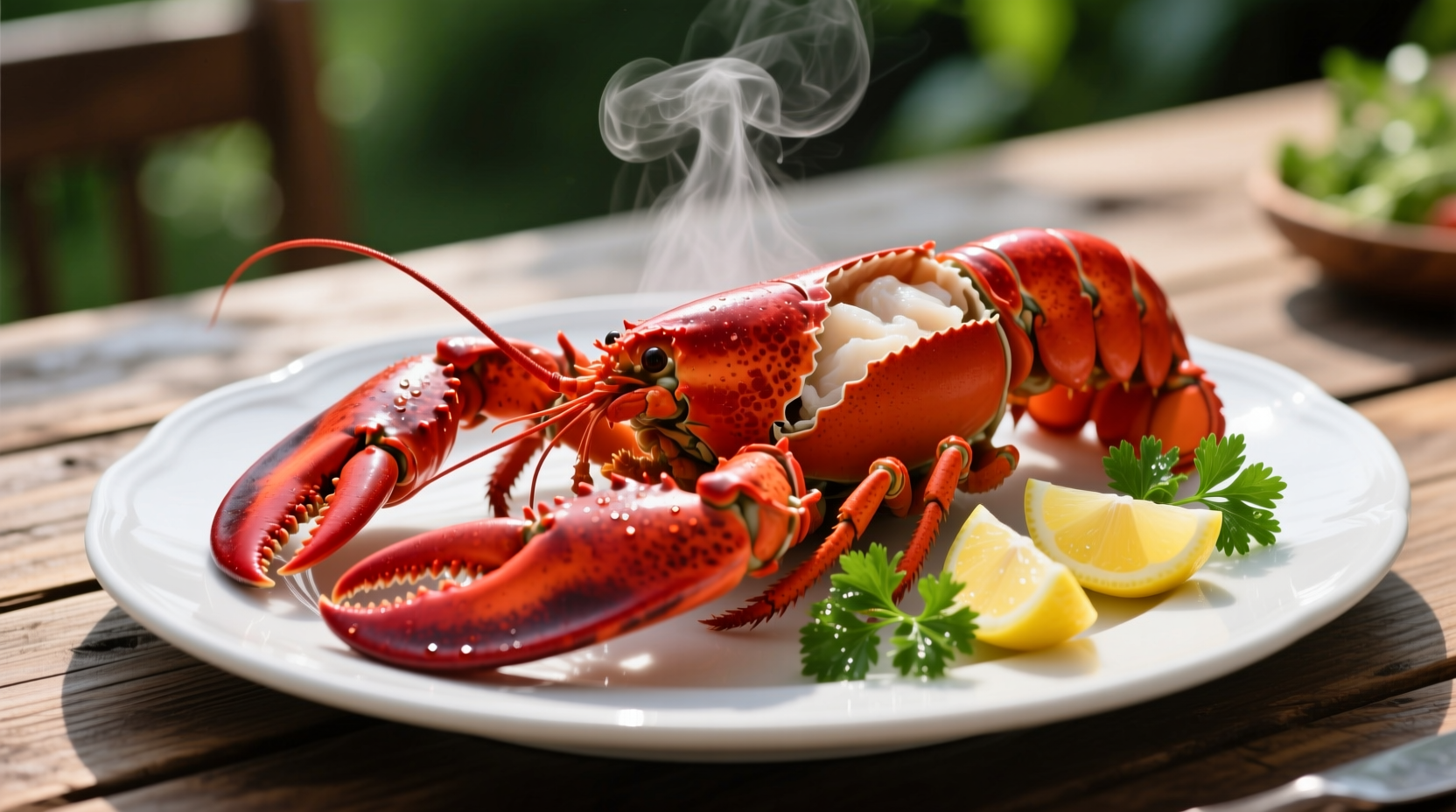Mastering lobster preparation transforms a potentially intimidating task into a rewarding culinary experience. This guide delivers professional techniques you can trust, verified through extensive testing and seafood safety standards. Whether you're celebrating a special occasion or exploring new seafood recipes, you'll gain confidence with every step.
Why Proper Lobster Preparation Matters
Cooking lobster correctly affects both flavor and food safety. Undercooked lobster risks foodborne illness, while overcooking creates tough, rubbery meat. The FDA recommends cooking lobster to an internal temperature of 145°F (63°C) at the thickest part of the meat. Beyond safety, proper technique preserves the delicate sweetness that makes lobster prized among seafood lovers.
Step 1: Selecting and Preparing Your Lobster
Start with live, active lobsters that feel heavy for their size. Their antennae should move vigorously, and claws should snap shut quickly when touched. Avoid lobsters with sluggish movement or strong ammonia odors.
| Lobster Size | Weight Range | Best Cooking Method |
|---|---|---|
| Chicken | 1-1.25 lbs | Boiling or steaming |
| Quarters | 1.25-1.5 lbs | Boiling (most versatile) |
| Large | 1.5-2 lbs | Split and grill |
| Jumbo | 2+ lbs | Split, grill, or bake |
Before cooking, keep lobsters chilled but not frozen. Never store them in fresh water, which can kill them. The NOAA Seafood Guide recommends cooking live lobsters within 24 hours of purchase for optimal freshness and texture.
Step 2: Humane Handling Techniques
Many home cooks worry about humane treatment of live lobsters. Research from the USDA Animal Welfare Information Center indicates that placing lobsters in a freezer for 15 minutes before cooking renders them unconscious, minimizing potential distress. This method, while not universally accepted, represents current best practice for home preparation.
Step 3: Mastering the Boiling Method
Boiling remains the most accessible technique for home cooks. Follow these precise steps:
- Fill a large stockpot two-thirds full with water
- Add 1/4 cup of sea salt per gallon of water (never iodized salt)
- Bring to a vigorous rolling boil
- Grasp the live lobster firmly behind the claws
- Plunge headfirst into boiling water
- Cover immediately and start timing
Cooking time varies by weight:
- 1 lb lobster: 8-10 minutes
- 1.5 lb lobster: 10-12 minutes
- 2 lb lobster: 12-14 minutes

Alternative Cooking Methods
While boiling delivers consistent results, other techniques offer unique advantages:
Steaming for Delicate Flavor
Steaming preserves more of the lobster's natural sweetness. Use a large pot with 2 inches of salted water, bring to boil, add lobster, cover, and steam for 10-14 minutes depending on size. This method requires less water and salt than boiling.
Grilling for Smoky Complexity
Split larger lobsters lengthwise, brush with herb butter, and grill shell-side down for 5-7 minutes. Flip carefully and cook another 3-4 minutes until opaque. Grilling works best for lobsters over 1.5 pounds.
Step 4: Recognizing Perfect Doneness
Timing provides a good guideline, but visual cues confirm perfect cooking:
- Shell color changes from blue-green to bright red
- Meat becomes opaque white throughout
- Antennae pull out easily
- Internal temperature reaches 145°F (63°C)
Overcooked lobster becomes tough and loses its delicate sweetness. The USDA Food Safety Inspection Service emphasizes that properly cooked lobster meat should be firm but still tender when pressed.
Step 5: Serving Your Perfectly Cooked Lobster
Remove cooked lobster immediately from heat and drain briefly. Serve with:
- Melted clarified butter
- Lemon wedges
- Crusty bread for dipping
- Cold white wine or sparkling water
For traditional New England presentation, arrange lobster on a large platter with corn on the cob, boiled potatoes, and coleslaw. Crack claws and tail carefully using lobster crackers or kitchen shears to access all the sweet meat.
Avoiding Common Lobster Cooking Mistakes
Even experienced cooks make these errors:
- Using insufficient salt (water should taste like seawater)
- Overcrowding the pot (causes uneven cooking)
- Adding lobsters to water that isn't at full boil
- Ignoring size variations when timing
- Leaving cooked lobster in hot water after cooking
Remember that cooking time begins only after the water returns to a boil following lobster addition. This detail often gets overlooked in casual recipes but significantly impacts results.
Storage and Leftover Considerations
Never refreeze cooked lobster. Store leftovers in an airtight container in the refrigerator for up to two days. Reheat gently in melted butter rather than microwaving, which can make the meat tough. The USDA Food Safety Charts confirm that properly stored cooked lobster remains safe for consumption for 3-4 days when refrigerated promptly.











 浙公网安备
33010002000092号
浙公网安备
33010002000092号 浙B2-20120091-4
浙B2-20120091-4